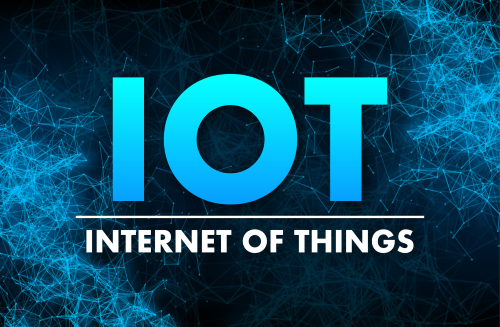· smart energy devices · 4 min read
IoT is fueling Smart Energy Devices
The term "smart" refers to their ability to communicate with each other through the Internet of Things (IoT), enhancing energy management and control.

Smart energy devices are at the core of modern energy efficiency and smart home technology. Often misunderstood as being “intelligent” on their own, the term “smart” refers to their ability to communicate with each other through the Internet of Things (IoT), enhancing energy management and control. IoT is a network of interconnected devices that share information and work together to perform specific tasks. It’s not the devices themselves that are smart, but rather the way they communicate and collaborate in the context of energy efficiency and smart home technology.
In this article, we will delve into the world of smart energy devices, exploring how they communicate through IoT, their benefits, and their role in leading us towards a more energy-efficient future.
Smart Thermostats
Smart thermostats are thermostats that connect to Wi-Fi, enabling remote control of your HVAC system through a smartphone or other connected devices. This connectivity allows for more precise control over heating and cooling, leading to energy efficiency and comfort in smart home technology.
Some smart thermostats go beyond basic remote control by communicating with other smart home devices. This interconnectivity allows them to work together to optimize energy consumption, adjusting temperatures based on other factors like outdoor weather or occupancy.
Additionally, certain smart thermostats have learning capabilities, meaning they can adapt to your routines and preferences over time. This “intelligence” helps in automating temperature adjustments, further enhancing energy savings. To learn more check out our comprehensive guide on smart thermostats
Home Energy Monitoring Systems
Home Energy Monitoring Systems (HEMS) are devices that integrate inside your electrical panel, allowing communication with your home’s energy source. They offer a comprehensive view of your home’s energy consumption at three distinct levels: whole home, circuit, and appliance.
Whole-Home Level: These systems are invaluable for understanding your overall energy consumption. This insight is essential if you’re considering committing to solar energy or tracking the progress of your energy-efficient upgrades. With utility rates rising, you may not see savings in dollars right away, but you can monitor your progress in reducing energy usage.
Circuit Level: Circuit level monitoring takes it a step further. By allowing monitoring at this level, you can identify inefficiencies in specific areas of your home, leading to targeted improvements. This comes in handy since most of your major appliance upgrades would have their own dedicated circuit.
Appliance Level: Appliance level monitoring allows you to analyze the energy usage of individual appliances, empowering you to make informed upgrade decisions. This can be achieved through Machine Learning, which is the Sense way of appliance level monitoring, or the addition of smart plugs, which is the Emporia way of appliance level monitoring
Want to learn more how Home Energy Monitoring Systems can help you make smarter energy choices? Check out our guide to [home energy monitoring].(guide-to-home-energy-monitoring).
Smart Plugs
Smart plugs connect to your Wi-Fi, allowing control and monitoring of electrical devices remotely. Designed for smart home integration and voice control, smart plugs enable more efficient energy use by scheduling devices to turn off when not in use or by understanding energy consumption patterns.
Smart Circuit Breakers
Smart circuit breakers are essential components that transform traditional electrical panels into intelligent energy management hubs. By controlling individual circuits, they enable homeowners to monitor and automate energy usage in real time. This upgrade to a smart electrical panel facilitates load shifting, a critical strategy in today’s energy landscape. With the grid under increasing strain and the opportunity to leverage Time-of-Use (TOU) rates, smart circuit breakers make energy management both convenient and profitable.
Smart Lighting
Smart lighting systems are designed for smart home integration and voice control, allowing you to personalize lighting intensity, color, and scheduling. By tailoring lighting to your needs and preferences, you not only create the perfect ambiance but also contribute to energy savings. Whether you’re looking to create the perfect atmosphere or simply save on your energy bills, smart lighting offers a brilliant solution.
Conclusion
Smart energy devices, interconnected through the Internet of Things (IoT), are transforming the way we manage and consume energy. From smart thermostats that learn our preferences to home energy monitoring systems that provide insights down to the appliance level, these devices are more than just “smart” – they are tools for a more sustainable and efficient future.
By embracing these technologies, homeowners can take control of their energy consumption, making informed decisions that not only save money but also contribute to a greener planet. The future of energy management is here, and it’s powered by the intelligent communication and collaboration of IoT-enabled devices.